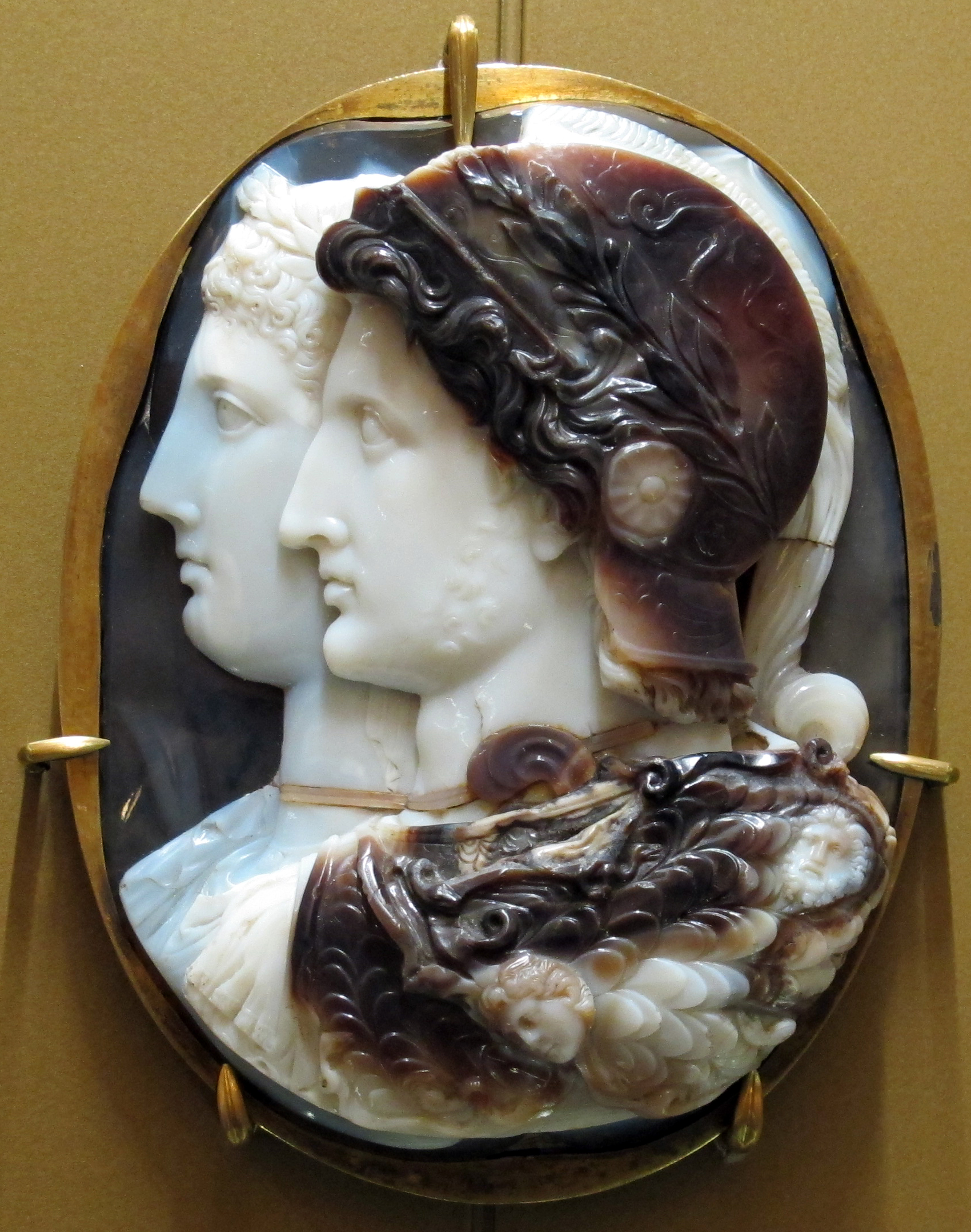Welcome to a new issue of the Journal of Runic Studies, the premier Malkioni publication for studies into the nature of Glorantha. If you haven’t subscribed yet, please consult with the spirit bound to the appropriate electronic page.
Last week David Castle’s book-club reading of the Guide to Glorantha began, and the Glorantha Discord server got a huge influx of people for the occasion. It’s great to see familiar names and new names alike on there. David has done a great job setting up a structured discussion, with many topic prompts for you to jump on. You don’t even have to show up at a designated time, the threads are still up for you to participate in!
David was also kind enough to make us a dedicated #god-learners channel on the server, so if you want to discuss recent episodes or newsletters with us, that’s as good a place as any! You can join the Glorantha Discord server with this invite link (only valid for this week).
Chaosium News

Here are this week’s Chaosium news!
Cover for Cults of RuneQuest: Earth Goddesses
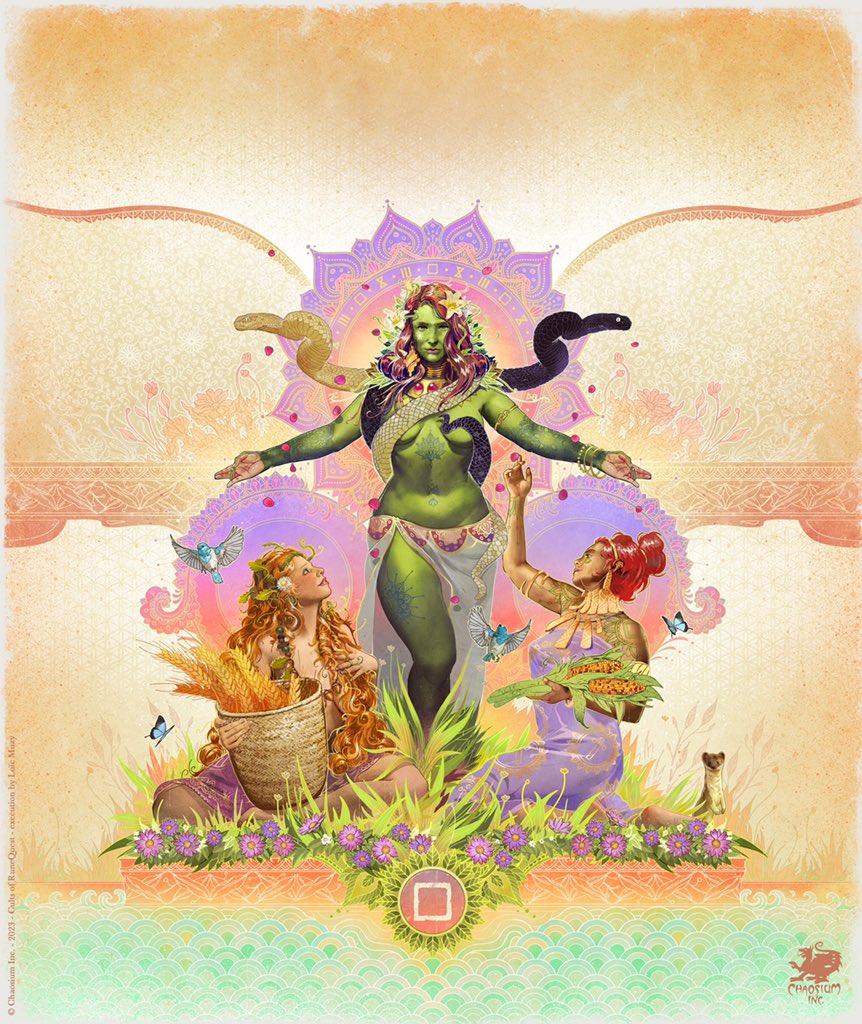
After nicely letting us get a good look at his cover for the Lightbringers book, Loic Muzy shares the cover for the Earth Goddesses book! In the process, he once again reveals who those figures are!
They are Esrola (on the left) and Pelora (on the right). I was quite wrong in my previous study of the cover… I wasn’t sure between Esrola and Voria on one side, and I stupidly thought of Hon-eel for the other goddess instead of Pelora, who is I guess the land goddess that Hon-eel channelled or something? Anyway, I was in the correct ballpark, but still wrong. That’s what you get when Joerg isn’t there to watch over me.
Basic Roleplaying is Back in Print (on Demand)
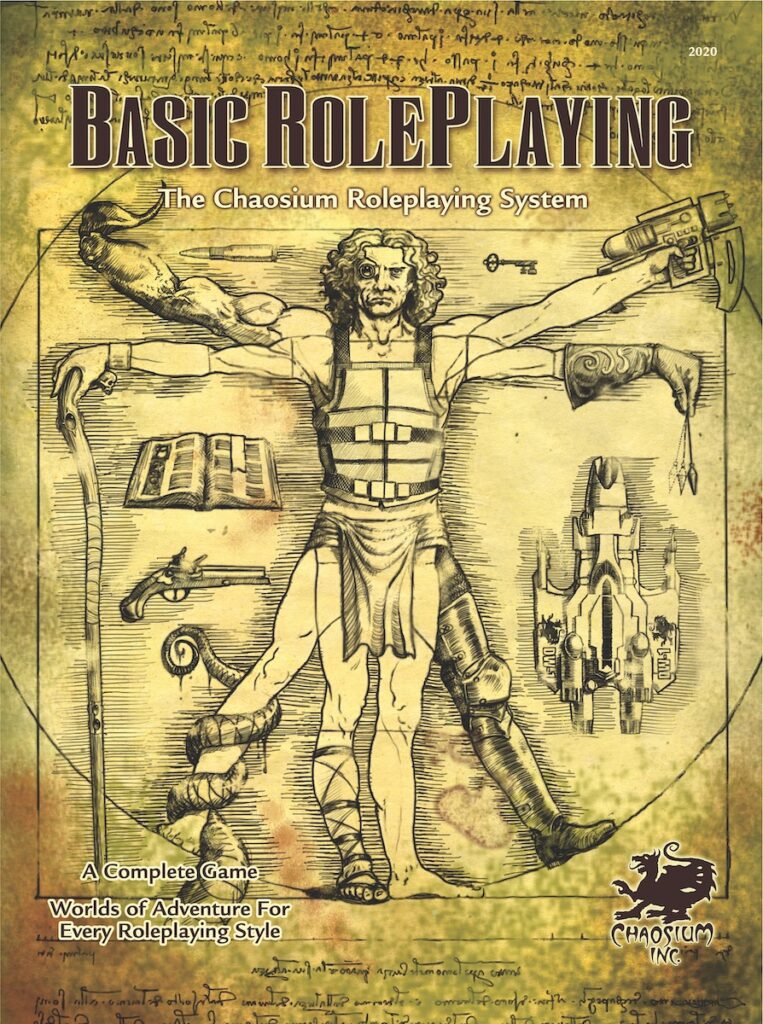
Basic Roleplaying’s “big gold book” is now available again in print-on-demand via DriveThruRPG. It had been only available in PDF for a little while, likely after the last offset printing ran out (well, maybe, see the end of this segment)
This isn’t directly Glorantha related but since the Basic Roleplaying system (“BRP”) was invented with the first edition of RuneQuest, it’s sort of indirectly related. This “big gold book” basically takes what Chaosium learned with their many earlier games (RuneQuest, Call of Cthulhu, Magic World, Elfquest, Stormbringer, and many more) and puts it all in a generic rulebook full of options for your BRP games. It’s got a buffet of various rules for magic, combat, psychic abilities, super powers, meta-currencies, and so on… If you’re unhappy with a particular aspect of a BRP game, there’s a good change the big gold book has some alternate rules for you.
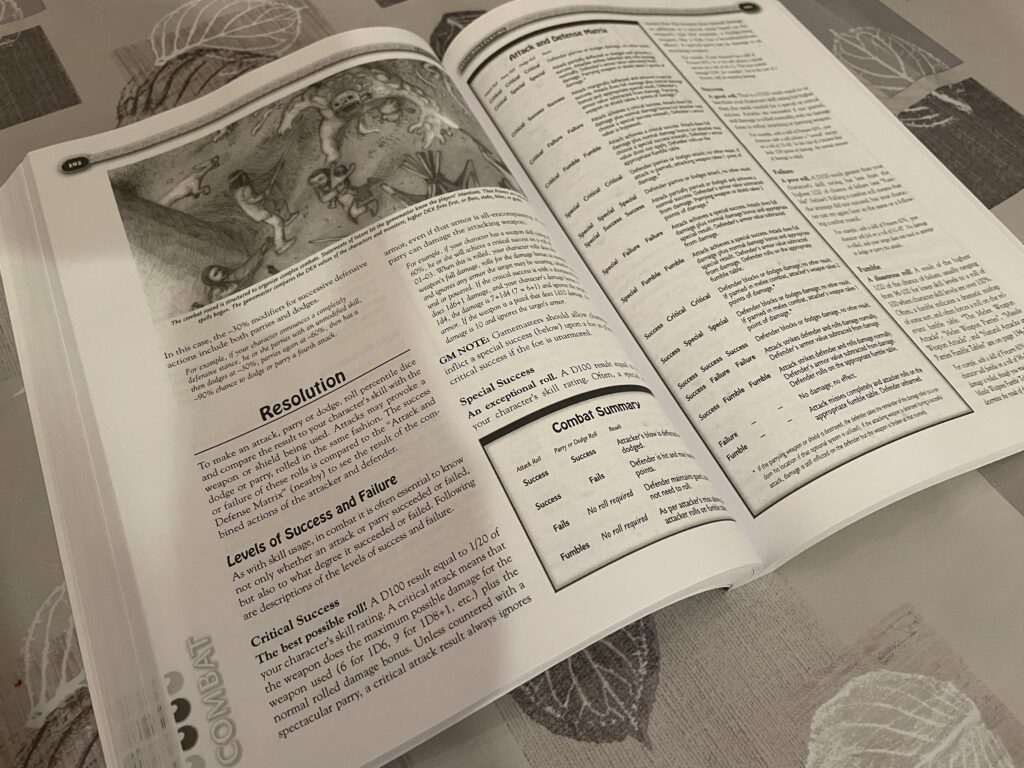
If you want to get cheeky, you could consider its “previous edition” to be the 16 pages booklet that was found in several Chaosium boxed sets in the early 1980s (pictured below)

Be warned that the big gold book is, let’s say, of a certain era. It dates from 2008, which isn’t that old, but this firmly predates Chaosium’s current era of the lush colour books. It is entirely black and white, with art of varying quality. Its layout is basic and arguably dated, although I genuinely love the baffling & cute “binary notation” of the chapters in the page bleeds. And of course it presents a 1980s game system complemented with, mostly, 1990s optional rules, so, well, manage your expectations.
But if you play more than a couple of Chaosium games, who likely all share this BRP DNA, you might very well find this book interesting! Check it out here, but note that US customers can order it directly via Chaosium. I have no idea if these are leftovers from a previous print run or if they are a new printing, and if so whether they’re from Lightning Source (which handles DriveThruRPG’s POD)
Jonstown Compendium

The Jonstown Compendium is Chaosium’s community content program for all Gloranthan games, hosted on DriveThruRPG. Disclaimer: all the relevant links are affiliate links that hopefully will let us cover some of the hosting and maintenance costs for the website and podcast! Thanks for using them!
Old Pavis: The City that Time Forgot
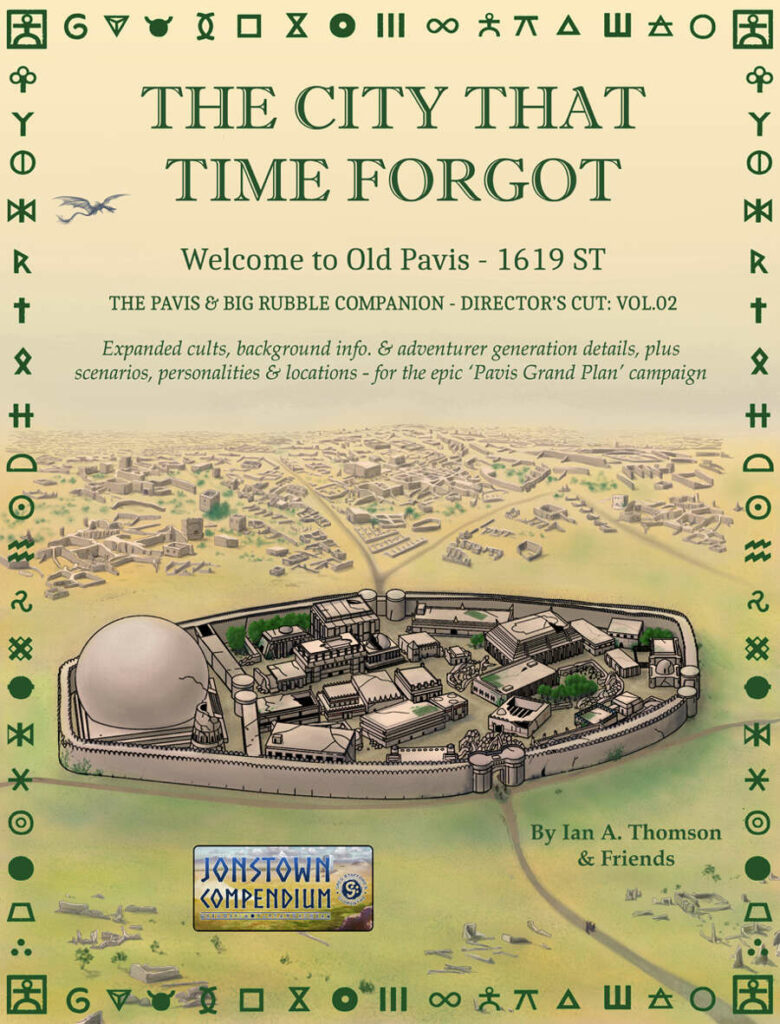
Ian Thomson and friends have released the second volume of the “Pavis & Big Rubble Companion, Director’s Cut”! The first volume was “New Pavis: City on the Edge of Forever“, and the new one is “Old Pavis: The City that Time Forgot“.
This material had originally been published in the series of “Pavis & Big Rubble Companions” in the early 2000s (see here and here). These are quite hard to find, these days. Ian Thomson has been tracking down many contributors to get their approval for a re-release, and along the way things have been edited and expanded.
Anyway, do you want expanded cult write-ups, city gazetteers and maps, character generation options, and scenarios set in and around Pavis? Of course you do! Grab this 240 pages tome of classic RuneQuest goodness here!
Call Up the Fyrd
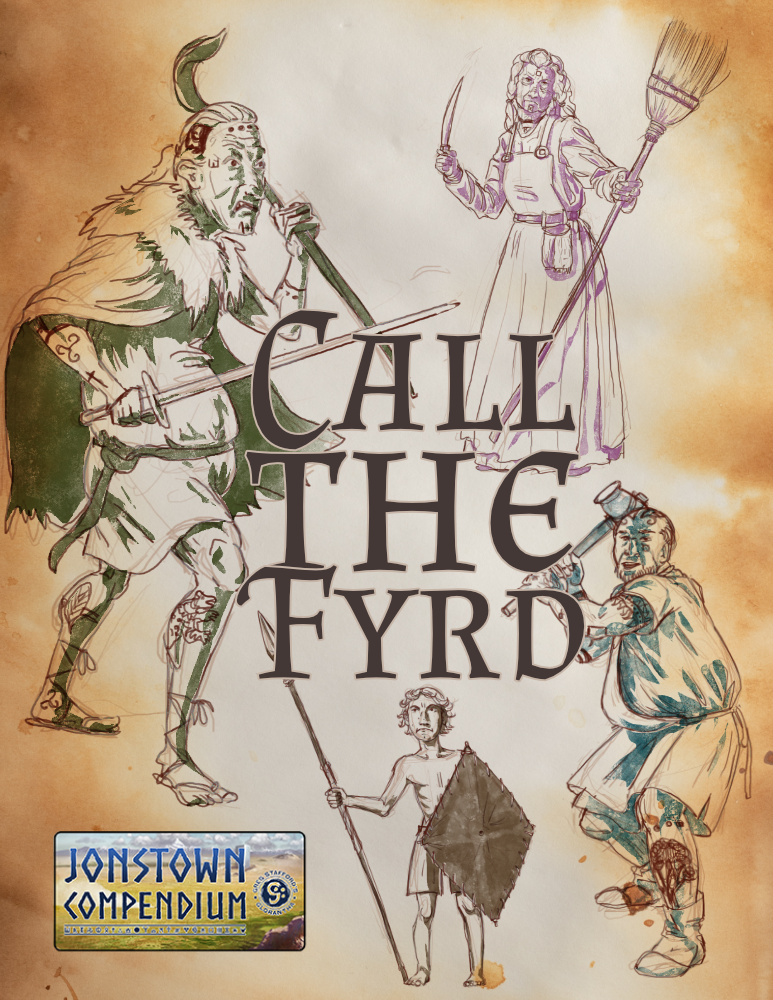
Zed Nope continues their collection of Gloranthan stock art with some militia members drawn in “loose sketchy style”. You can use this art for your Jonstown Compendium or personal projects (with conditions).
Two Reviews for Children of Hykim
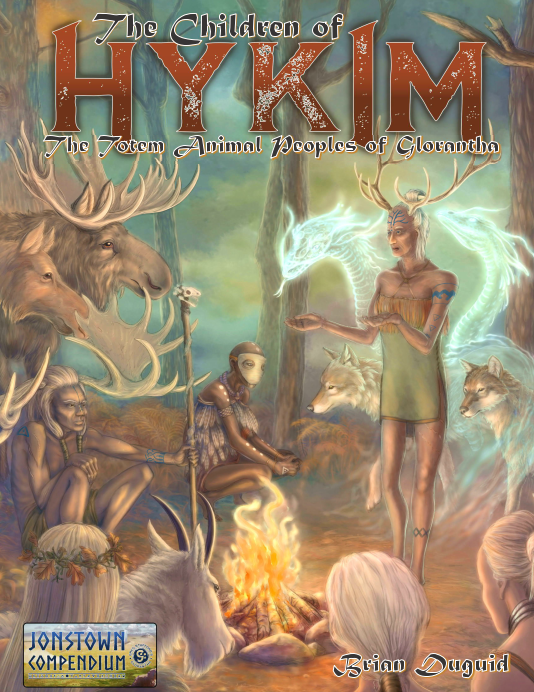
Brian Duguid’s Children of Hykim (the topic of episode 17 of our podcast) gets reviewed not just once but twice in as many weeks!
The first review comes from good ol’ Pookie and his inevitable Reviews From R’lyeh. Besides a “terrible, unforgivable pun”, Pookie sounds quite happy with the book:
The Children of Hykim is superbly researched and richly detailed examination of the Hsunchen and their world and world view, which although very much falling under the category of ‘Your Glorantha Will Vary’, really feels as that should not be case, that it should be an official release. It may not be the official guide to the Hsunchen, but The Children of Hykim feels like the definitive guide until there is one.
He does note of course that the topic and scope of the book may or may not be of immediate interest to your campaign.
The second review comes from equally good but not as ol’ Austin Conrad. As usual, Austin includes his “armchair vs tabletop” rating for the book, which tells you if this is more of a research/reference book for the gamemaster, or something you’d bring to the table and use during play. In this case, Austin would place it “closer to the armchair side”. The review is extremely positive, and as a complement to Pookie’s review, adds:
Children of Hykim shouldn’t be seen as a niche book about a niche culture. It’s a beautiful resource work which any gamemaster could utilize with ease in their own Glorantha.
Get the book here! The latest update (to celebrate reaching Electrum Best Seller) includes a full transcript of our podcast episode with Brian!
Jeff’s Notes

Jeff Richard, the current mastermind on everything Gloranthan at Chaosium, is often posting notes and thoughts on the RuneQuest Facebook group. Here’s our curated list from the past week. A partial archive of these sources is compiled on the Well of Daliath.
Yelmalio and Elmal Again
You could bet your hat that, with the recent announcement of the Cults of RuneQuest books, somebody would be asking about this whole Yelmalio/Elmal business again… like, for instance, whether Elmal would show up in the Lightbringers book. Of course, he isn’t: it’s just Yelmalio, and he will be in the Sun Gods’ books, with a small sub-cult mention for Elmal.
Still, Jeff took the time to answer, and gave another summary you may find interesting about the history of the cult:
There is no Elmal v. Yelmalio. They are the same god, same archetypes, and fit in the same place in cosmic mythology. We all know Yelmalio – he’s that last light that survived after the Sun went to the Underworld. He’s in the night sky as Lightfore, the brightest planet in the heavens, which follows the same route as the Sun.
In much of central Genertela, we have a network of Sun Dome temples which anchor the Yelmalio cult. We’ve got several in Dragon Pass, several more in Saird, one in Prax, a few in Aggar and Talastar, etc. Let’s say altogether that network has about 160,000 or so initiates. That’s a BIG cult. The cult really got rolling in the early Second Age, when it helped break the power of the trolls (lets call it the “mini-Darkness” following the Gbaji Wars).
After the Dragonkill War, the Hendriki of Heortland were cut off from that. And the Orlanth cult was SO predominant in Hendrikiland, their tiny Yelmalio cult found ways to claim an association with Orlanth to survive. They harkened back to the Dawn Age Orlanthi, when Yelmalio was worshiped in conjunction with Orlanth as “Elmal”.
But with the Resettlement of Dragon Pass in the 1400s and the resumption of trade with Peloria in the 1500s, the truncated (Y)Elmal(io) cult came into contact with Yelm (the Lunars helped with this). They looked to magical riches of Yelm and started joining that cult – and they started a civil war in Sartar against the Orlanth Rex cult. Monrogh went to the Hill of Gold and saw the fullness of Yelmalio. Yelmalio is Neutral towards Orlanth, and as long as Orlanth respects Yelmalio’s place in the world, Yelmalio can respect Orlanth’s. And guess what guys? We are already initiates of Yelmalio! No need to try to tie ourselves into pretzels trying to initiate to Yelm – we are already Yelmalio!
For the sake of people who really loved the KoDP video game, we kept a small Elmal subcult as a possibility in the Yelmalio cult writeup, but as far as I am concerned, that subcult is maybe a generation away from being extinct.
Jeff provides many more precisions and comments about Yelmalio, Elmal, and their relationships to other deities in the thread, showing pretty good patience with dead horse floggers. From what I can tell, it seems to really boil down to Elmal being a mostly King of Dragon Pass creation, and some of the official Gloranthan material ran with it to some extent as a “thank you” to David Hall.
Old HeroQuest players may also want to take note of this:
Elmal does not have fire powers. I screwed up in the description in Sartar KoH.
You won’t be surprised to know that the thread received a massive amount of traffic (more than I can follow) and was eventually locked by the forum admins. Gloranthaphiles gotta argue, I guess.
In the meantime, if you haven’t seen it yet, you may want to celebrate the 30 years anniversary of this essay by Greg Stafford about the “Birth of Elmal” or “Why I screwed up your Glorantha”!
The Spread of Cults and Temples
As an offshoot of the previously mentioned thread, Jeff compiled a few examples of how initiates of a cult can get worship services from a wide range of temples across Glorantha. He uses the RuneQuest Glorantha pre-generated characters as examples for this. So when it comes to Orlanth, we look at Vasana’s experience:
Vasana was initiated into the cult of Orlanth Adventurous (Vinga) at the major temple of the Colymar tribe (as is common). As an initiate she offers worship to Orlanth at all sorts of temples and shrines to the god and his aspects throughout Dragon Pass, Pavis, and the Holy Country. Vasana has traveled from Clearwine to Ralios and had no trouble offering sacrifices to Orlanth in the countless temples and shrines to the god along the way. Normally she recognises the regalia, the accoutrements, and the songs in Storm Speech – this stuff has been carried throughout Genertela over the last sixteen centuries.
On the other hand, Nathem is used to only worshipping Odayla the Bear God at a few shrines here and there between Tarsh and Sartar. But things change when he travels further north:
He travels to Syllila where there is a large and organised cult with as many people as the entire adult population of the Tarsh Exiles. It is an eye-opener, with new stories, new myths, and more. So Nathem keeps wandering, and eventually makes his way to Fronela. There he encounters the Rathor cult – and Nathem tries worship the Great Brown Bear there. Does he succeed or is that the point where the differences are too great? Dunno, sounds like a fun part of that campaign though!
The note also has a third example featuring a character named Berensor who was initiated into… the Elmal cult! Go read his short story, and that of his grandson Varthanic, to learn how initiates of Elmal and Yelmalio experience different temples in different regions.
The only annotation worth making for this is to say that the “Amber Fields” (mentioned in Berensor’s story) is the name of the location of the Sun Dome Temple in Southern Sartar. You can see it labelled riiiiiight at the bottom of left the “Map of Northern Sartar” from the RuneQuest Starter Set:

The 15 Sun Dome Temples
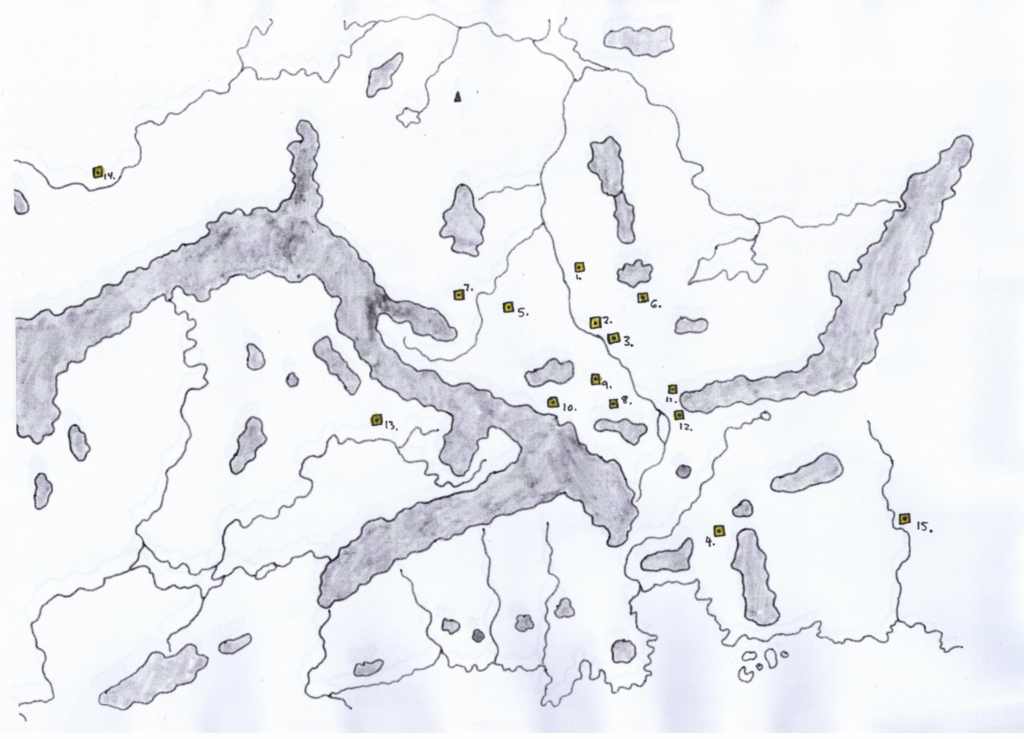
Jeff had already written, a long time ago, about the 15 Sun Dome temples found in Central Genertela around the time of the Hero Wars. Since Yelmalio was very much in fashion last week, he wrote again about it:
There are 15 autonomous Sun Dome Temples of the Yelmalio cult. The temples are uniformly shaped, although many vary somewhat in surprise. The most important Sun Dome Temples are generally considered to be that of Dragon Pass (in Sartar) and Saird (Mirin’s Cross).
There is a bit more information, including how important the Yelmalio cult is in the Lunar Provinces.
Tarsh
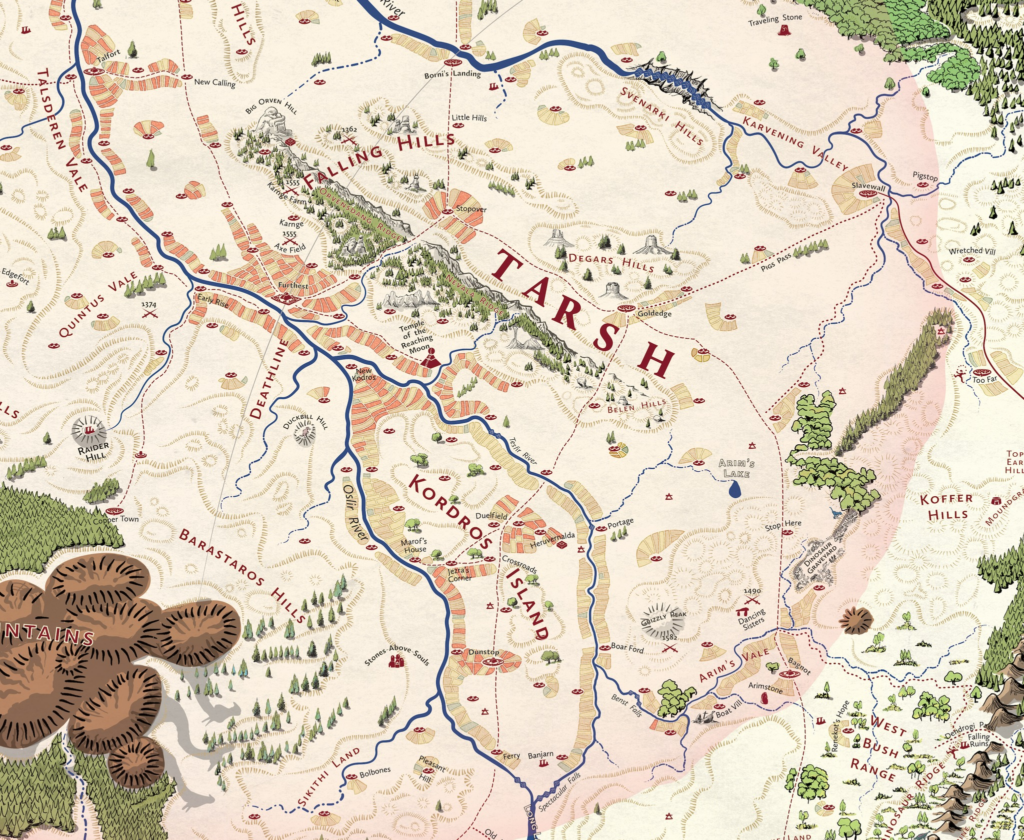
It’s map time! Look at this wonderful bit of the upcoming Dragon Pass map… oh my. And the funny place names like “Stop Here” and “Ferry”.
Jeff gives a high level view of Tarsh, with its Lunar colonies centred around Furthest and Dunstop:
These colonies are overwhelmingly Lunar in character – in the city of Furthest almost half the adult population are initiates of Lunar cults, and in the rural areas around Furthest that percentage rises to more than half the population. Think the Greek colonies in Central Asia – these Tarshites are self-consciously Lunar. And not as converts to the Lunar Way – they likely claim (often spurious) ancestry going back to those who followed Hon-eel in the Fifth Wane, and the Maize Goddess is very popular there (indeed on the maps you can see this area as the Maize Belt).
Bagnot and Slavewall are different: they’re at the edge of the Empire’s Glowline, and have been properly conquered by the Lunars only in the past couple generations:
Bagnot in contrast has less than a quarter the city population initiated into a Lunar cult, but more than a quarter are initiates of Orlanth. In the rural areas around Bagnot, the Lunar percentage drops to less than 10%, while the Orlanth cult membership stays the same (increased percentages of Ernalda, Maran Gor, Babeester Gor, and Humakt make up the difference). Bagnot more resembles Lunar Occupied Sartar than it does the area around Furthest.
There is a lot more material in the note including a look at general politics of the region, Fazzur Wideread, why the Orlanth cult isn’t completely wiped out, the difference between Tarsh and Sartar, and more.
Holay

Let’s keep going north!
Directly north of Tarsh is Holay, which includes Mirin’s Cross, the great Daughter’s Road from Jillaro to Filichet, and several Sun Dome Temples. Holay is the most populous of the Lunar Provinces, with some 600,000 inhabitants, of whom 400,000 are adults. Some 120,000 are initiates of the Lunar Way, including 24,000 followers of Hwarin Dalthippa.
I’ve officially run out of time to analyze these notes, but I appreciate with summary of the Lunar Provinces’ political dynamic:
So again, you can see the common pattern in the Lunar Provinces – a Lunar core, probably originally settlers from the Heartlands, allied with Solar cultists and assisted by the Provincial Army, are able to keep the Orlanthi in check.
The “Solar cultists” mentioned here include a few thousand Yelm (and other) initiates, but mostly a whole bunch of Yelmalio follows. Forty thousands of them… changing their loyalties would greatly change the local balance of power!
The Grazelands
Like I said, I’ve run out of time for analyzing these notes (in exchange you get some stuff on marble quarries later in the newsletter!), but if you’re interested in the Grazelands, here’s some information, including how much of a political powerhouse the Feathered Horse Queen is:
The dominant cult in the Grazelands is Ernalda, with some 9250 initiates out of a total adult population of around 26,000. The Ernalda cult dominates the Grazelands like no place outside of Esrolia. The Feathered Horse Queen is the high priestess of the cult, and also recognized as the high priestess of Kero Fin for Dragon Pass. She is closely associated with the Maran Gor and Babeester Gor cults (with another 1575 initiates in the Grazelands between both cults). Even more impressively, Feathered Horse Queen is the focus of loyalty of the Humakt cult of the Grazelands, with another 1325 initiates. Together these cults serve as bodyguards, enforcers, and dangerous reminders of the power of the Feathered Horse Queen.
The Feathered Horse Queen (and Ernalda) is courted by both Yelm, represented by the semi-nomadic horse-riding “Pony Breeders” that you can play in RuneQuest Glorantha, and Orlanth, represented by the Barntar-worshipping farmers of the region.
Jeff explains in the note how the first Queen established a compromise between these two factions in order to prevent one exterminating the other, goes over her marriages, explains how her heroquesting helped establish her claim to power, and more!
There is also this extra note on the Pure Horse People in general: not just the Grazelanders but also the main two tribes from Pent.
Miscellaneous Notes
- Dragon Pass Pantheons: the rough membership numbers for the various pantheons map fairly well to the release order of the cults books!
- Cult Demographics of the Lunar Empire: a closer look at membership numbers for the Lunar Empire. Those are big numbers, with the big pantheons being more than a match for each other. Just don’t piss off the Earth Goddesses.
Community Roundup
The community roundup is our highlight of interesting things being mentioned in the Glorantha-related Facebook groups, sub-Reddits, and other similar online places.
OpenQuest Updates their SRD
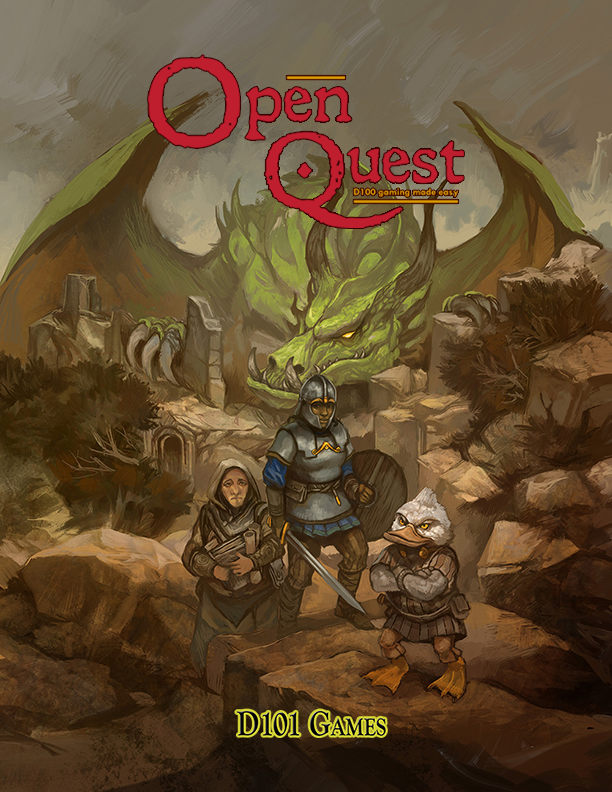
In these days of exciting gaming legal news, D101 Games has announced that the OpenQuest SRD would now simply be using a Creative Commons license.
The OQ SRD is now CC BY and has been updated with the amends to the 2nd Printing, as has the downloadable text version. The POD version is currently being updated to the 2nd printing, will be available again in about a week or so.
We’re also expecting some license changes for Chaosium’s own BRP SRD, but if you want to make a game based on a slightly simpler RuneQuest-inspired D100 system, you might as well check out OpenQuest and even SimpleQuest (from the same authors)
Newt Newport’s RuneQuest Campaigns
Speaking of D101 Games, Newt Newport (who is both the founder of D101 Games and a giant Glorantha nerd) has updated his “Arkat’s Playground” blog with a list of his RuneQuest campaigns across the ages…
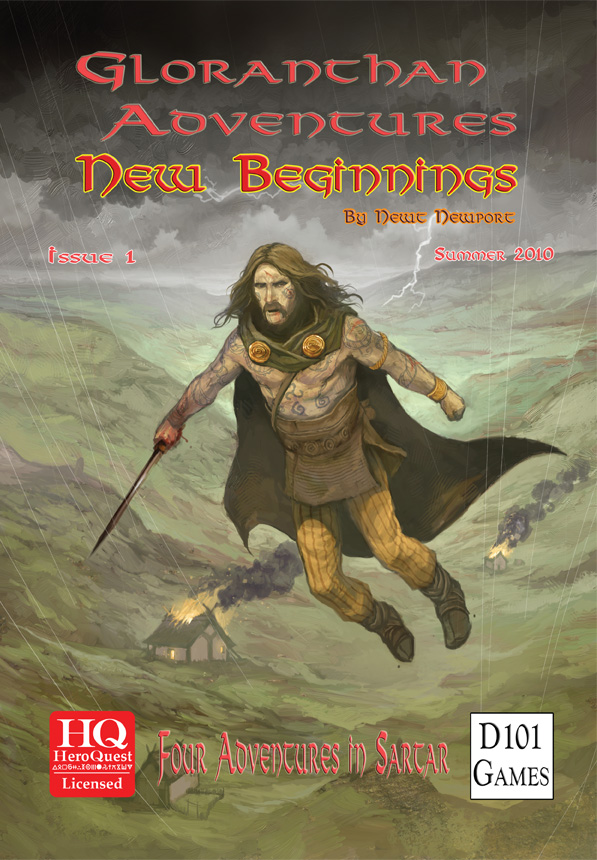
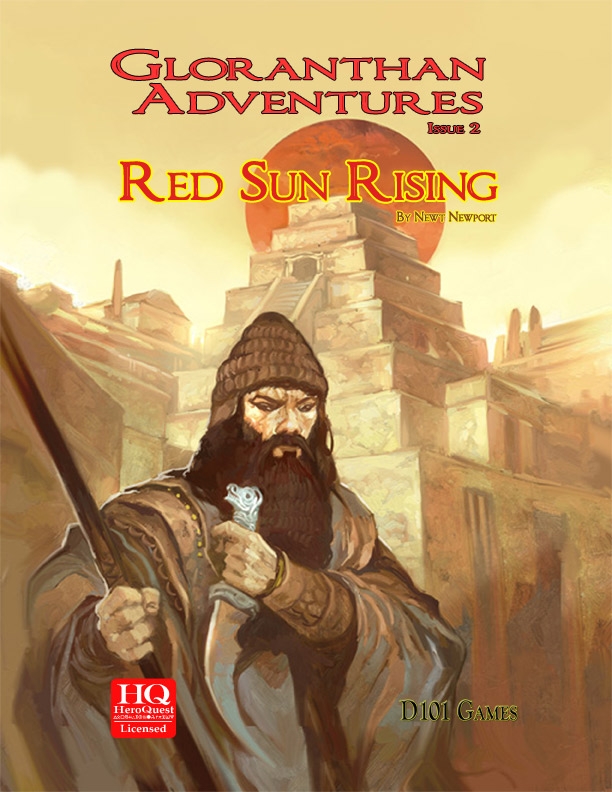
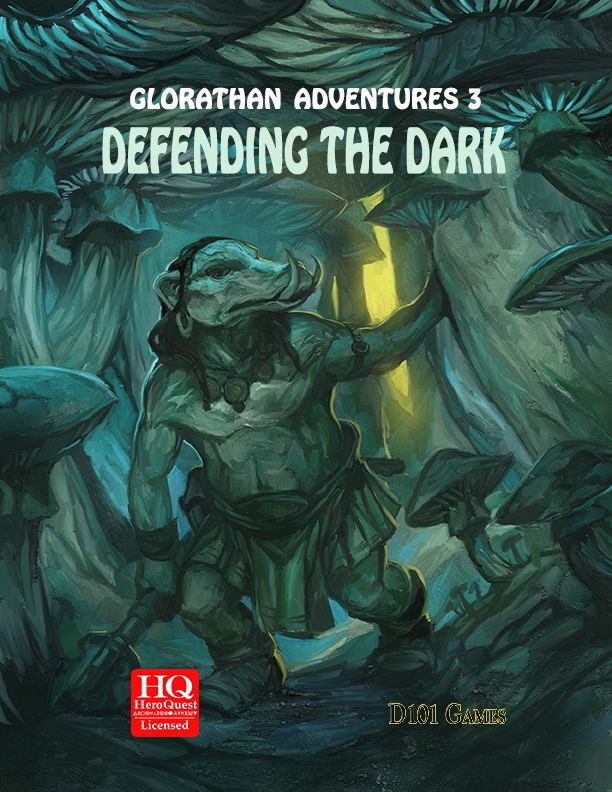
This is quite the list, with many unusual parts of Glorantha being explored in total “Your Glorantha Will Vary” ways. A lot of it sounds awesome, and some of it was written and published, although it might be tricky to find these days.
Did you run some really uncommon Gloranthan games? Then you should write a little something about them and share it with the rest of us!
Lee O’Connor Draws Some Black Elves
As you might already know, Lee O’Connor (which we interviewed on the podcast) is drawing some Voralans for an upcoming book by Brian Duguid. If you’re curious, you can watch him at work here on Instagram! With any luck, he will do more live-drawing sessions in the future…
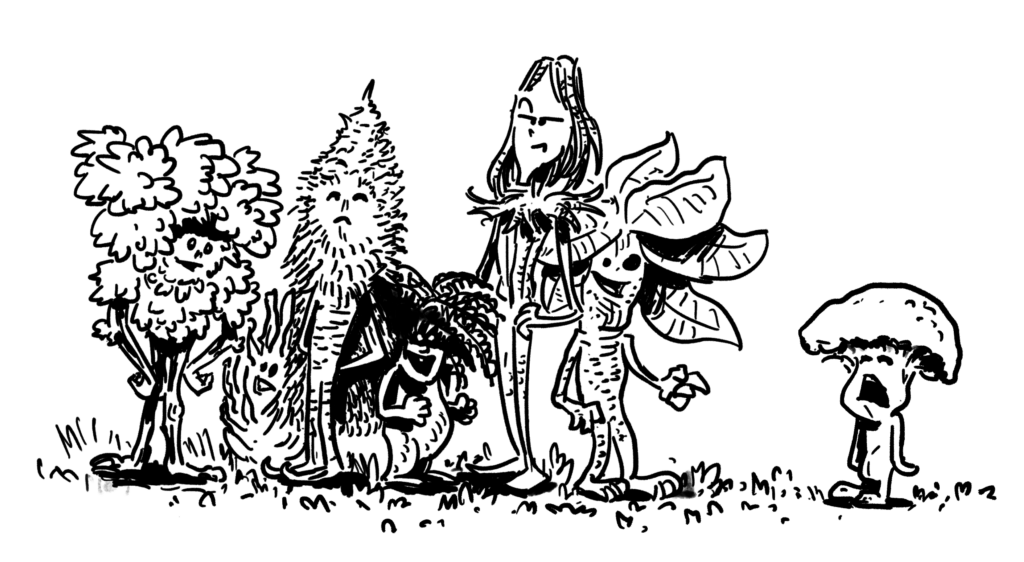
In the meantime, check out these Black Elf jokes, also by Brian Duguid, complemented by some quick cartoony doodles by yours truly.
Elsewhere on Arachne Solara’s Web
Not everything is about Glorantha, although most things are! Here are loosely relevant things that we found on the interwebs.
Ancient Greek Jewellery
I had previously posted a quick thing about ancient jewellery, but here’s a bit more. This list of Ancient Greek bling showcases the sophistication of Iron Age artists and crafters.

For instance, the gold hairnet above is from the 3rd century BCE, with a centre relief of Artemis, the goddess of hunting, wilderness, childbirth, and childcare (among a few other hats).
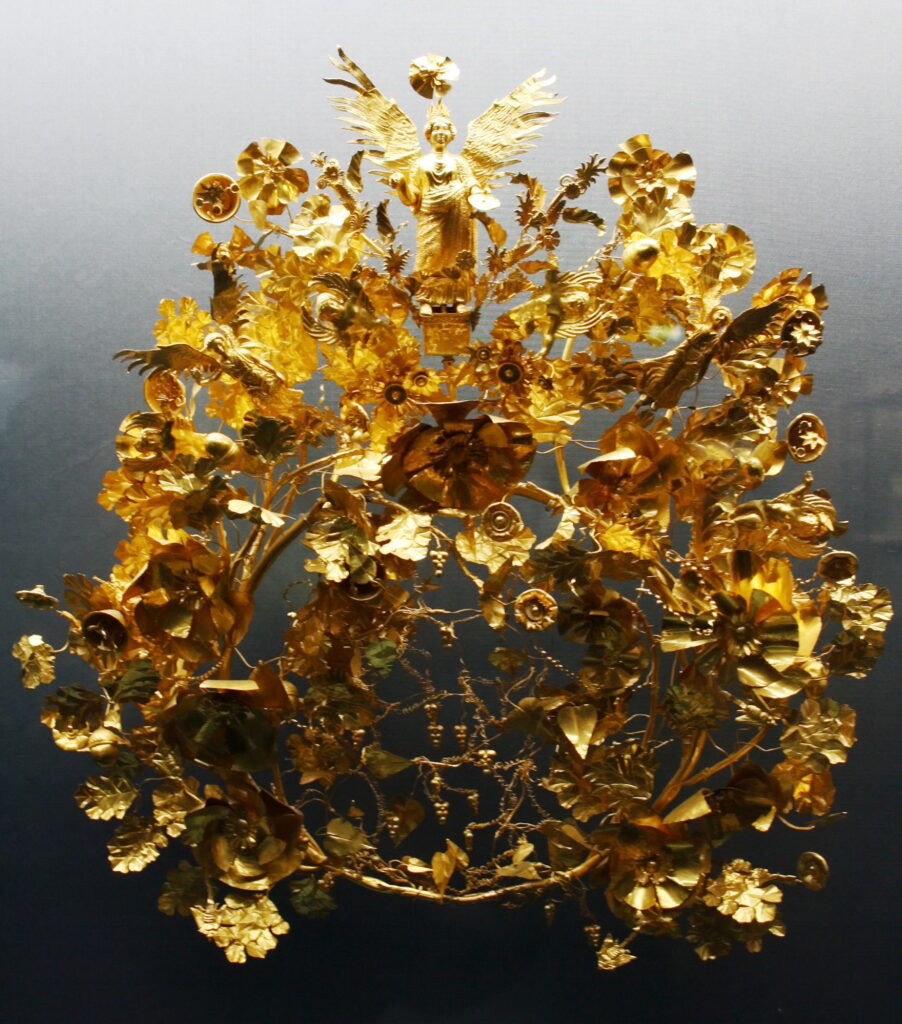
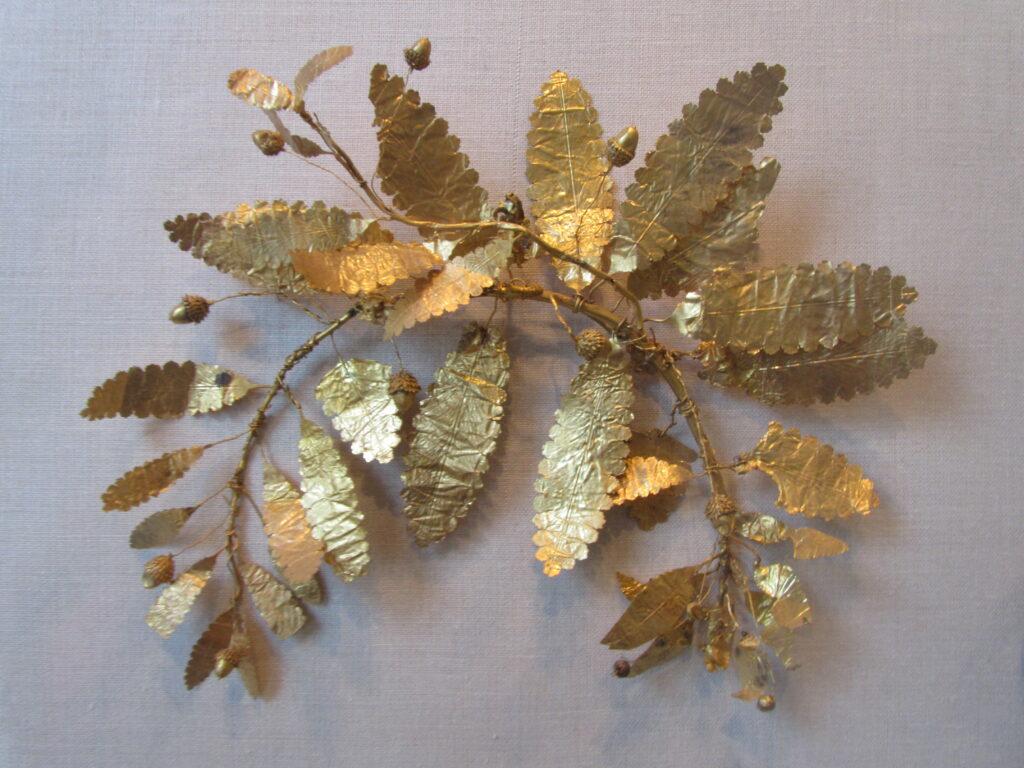
These golden wreaths above (the second being only a fragment) demonstrate the kind of very fine crafting that was possible at the time (also in the 3rd century BCE) By the way, I can’t read about “wreaths” without thinking about “wraiths”, so if some haunted jewellery shows up in my games, you’ll know why.

Can I interest you in learning my new words of the day? This above is a “Carnelian Intaglio”, a very popular (although luxurious) sort of jewellery that consisted of a carved gemstone mounted on necklaces and rings.
The first term, “carnelian”, refers to the carnelian mineral often used to make these pieces. Carnelian had been used for fancy stuff dating back to the 4th or even 5th millennium BCE, and I imagine that long distance traders across Europe and the Near East had quite a bunch of those rocks in their bags. Since wax doesn’t stick to carnelian, it was also a popular material for making seals, including Assyrian cylinder seals and Egyptian scarabs. You know… the kind of stuff that spies might want to steal.
The second term, “intaglio”, is actually in the dictionary. It’s “an engraving or incised figure in stone or other hard material depressed below the surface so that an impression from the design yields an image in relief.“
Anyway, the intaglio above dates, again, from the 3rd-to-1st century BCE, and features the head of Medusa. If you look for Ancient Roman or Greek carnelian intaglios in your favourite online image search, you’ll find a whole bunch more.
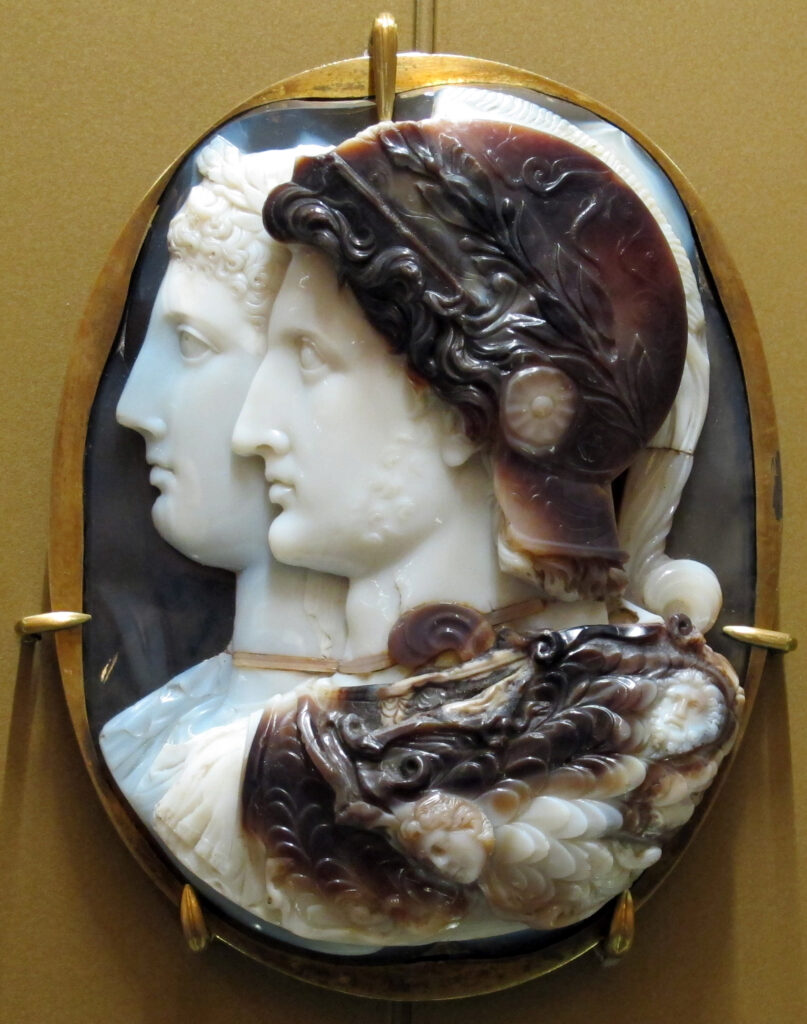
The last type of jewellery I didn’t know about are “cameos”, such as this Gonzaga cameo above (guess what, it’s also from around the 3rd century BCE, what a coincidence!)
My third new word of the day (what a day!) is therefore “cameo“, not in the classical superhero meaning of “have you seen Stan Lee’s cameo in Spider-Man Homecoming?“, but in the even more classical engraving meaning of, basically, the inverse of an intaglio. Intaglios have a “negative image”, i.e. the engraving is carved into the gemstone. In contrast, cameos have a “positive image”, i.e. they are a sort of bas-relief that “comes out” of the gemstone. You can find more examples of cameos here.
It’s not clear who the two figures are on the Gonzaga cameo above… they have been identified with several famous Hellenistic and Roman figures. But it sure looks pretty.
For more Ancient Greek jewellery, including bracelets and armbands, see here.
Carrara Marble
One of the many things I’d like to feature more in my Gloranthan games is evidence that the world of Glorantha is inhabited by people who work, play, create, and, well, live there. This includes “bits of ecosystems” such as, say, what goes into making these wonderful Esrolian or Lunar palaces with marble columns and floors or whatever you have in your Glorantha. From the people cutting blocks of marble, to those trading and transporting them, and then the artists and architects and priests involved in the final buildings, there are many opportunities for adventures and shenanigans…
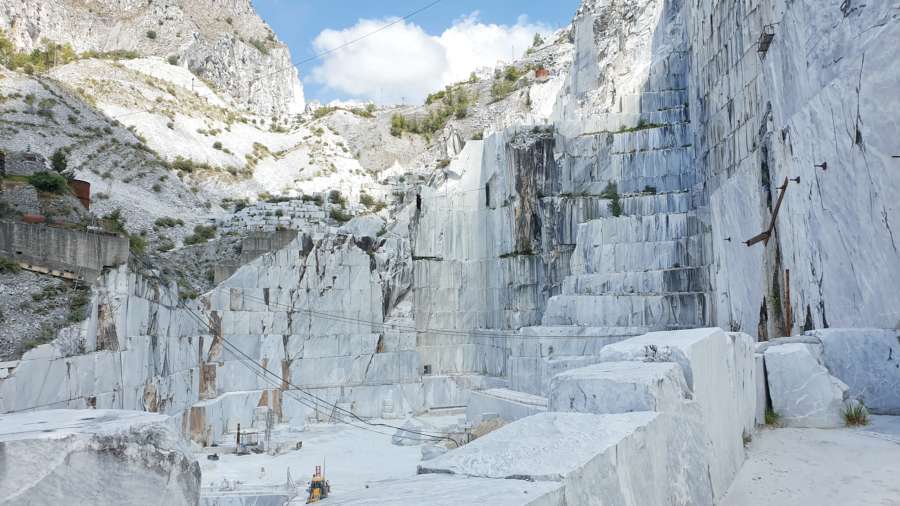
But more importantly, marble quarries are super photogenic places for setting up an action scene! Imagine jumping up and down these giant blocks, smashing enemies into these grey walls, blowing up chunks of them with magic! Who cares about architecture or mineralogy, I want to blow some shit up! Yay!
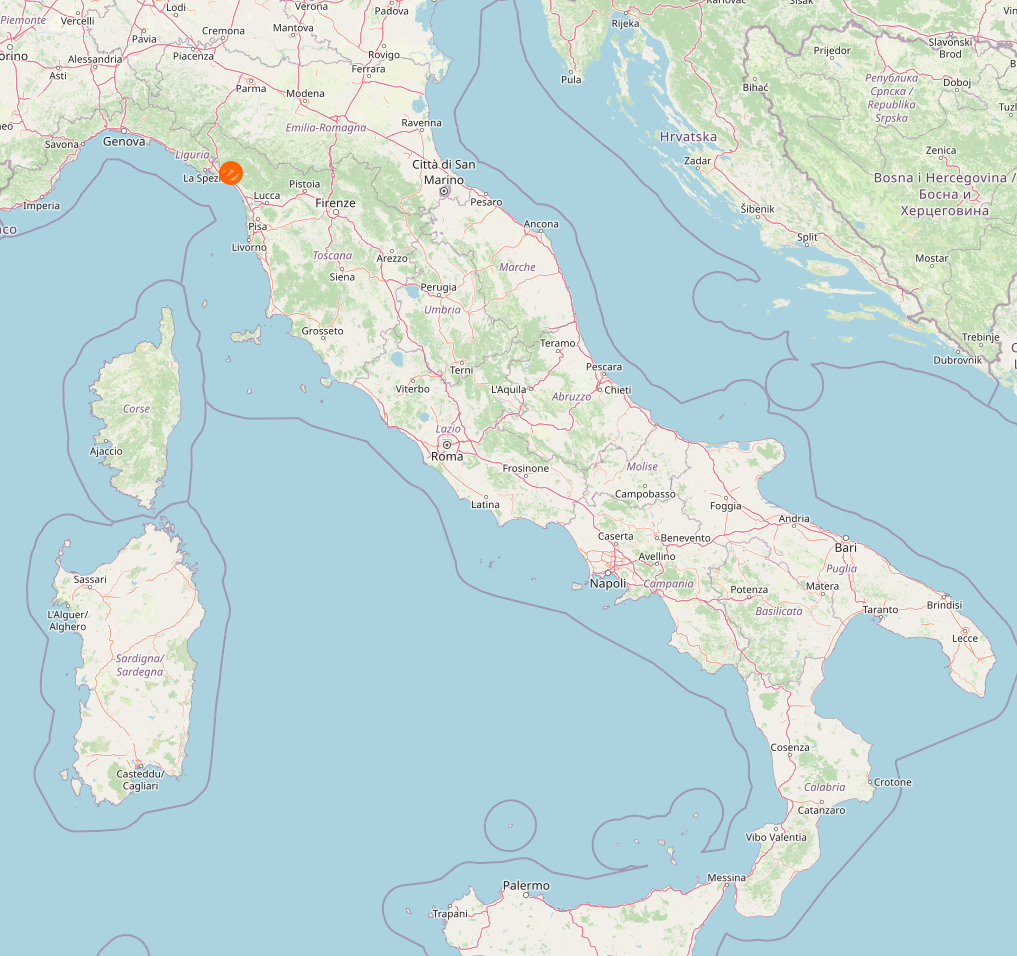
Carrara marble takes its name from the city of Carrara in Tuscan, Italy (see the red dot above) where there are more than 650 quarry sites. Marble has been extracted from that area from all the way back to Ancient Rome. Romans really loved this beautiful white marble and called it “Lunar marble”, in reference to the moon. Guess who, in Glorantha, might have a similar name for a similarly popular type of marble, eh?
It get even better in terms of parallels, because the story goes that the Romans took possession of the mountains around these quarries in about 180 BCE after fighting off the Celtic tribes that lived there… sounds familiar? Of course, those Celtic hillbillies weren’t mining the mountains, and just living there. The Romans only later realized what they were sitting on, and marble excavation most likely started around 155 BCE.

Many Roman landmarks standing today are made of Carrara marble, including the Pantheon and Trajan’s Column (pictured above), which is made of 20 marble drums each weighing about 32 tons.
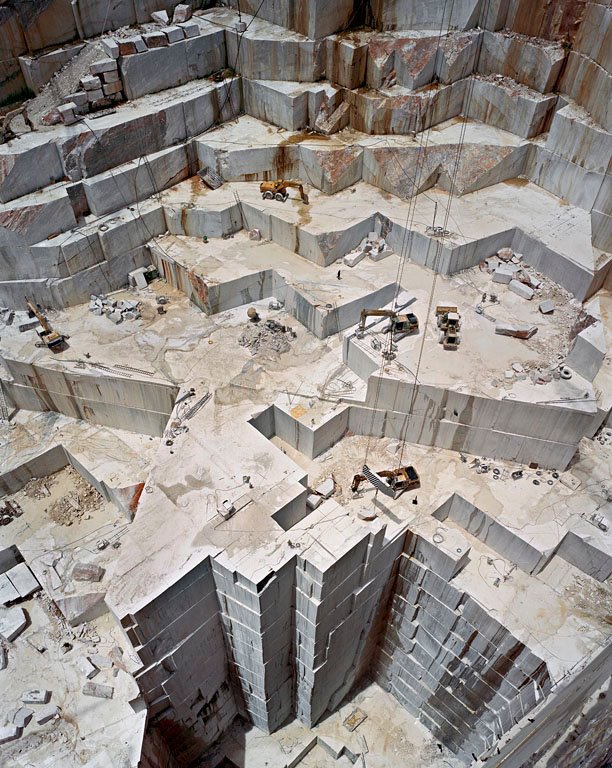
I haven’t found much information about how big those quarries were during the time of the Romans. I doubt they were as mind-boggling big as they are nowadays, thanks to all these machines we have… but even if you scale these quarries down, they must have been fairly sizable in the ancient world.
This article on the Carrara quarries mentions:
Once upon a time the extraction of the marble was entrusted to slavery, and their techniques remained unchanged for thousands of years. In the beginning, the miners exploited the natural fissures of the rock, and inserted wooden wedges. These were then wet with water: their swelling, caused by the natural expansion of the wood, would cause the marble block to detach from the mountain. The Romans used metal chisels to cut blocks with a depth of about 2 meters. Metallic chisels were inserted into cuts about 20cm (around 9 in) deep, and after much continuous hammering, the block was separated from the mountain. Then, to cut the block into smaller slabs, two men would use a large handsaw while a mixture of water and silica was poured onto the block to facilitate the cutting process. It’s incredible to think that, each day, only about 8cm would be cut, and it could take up to two years from extracting the marble to transporting it to the coast.
[…]
Once the marble blocks were cut away from the mountain, another challenge lay ahead: how to transport the marble down the mountain, to the sea port. One of the most dangerous jobs in working in the marble quarries was to be involved in the transport. The marble blocks weighing about 30 tons had to be carefully transported down very steep slopes on a sleigh-type structure that would slide on wooden beams greased with soap. Ropes were used by about 10-12 men to try and control the marble and to resist the pull of gravity. Two other men had the job of transferring the beams from the back to the front and you can imagine how often accidents happened: many men were killed. Oxen were also used and the work was so strenuous for them that often they would die along the way.
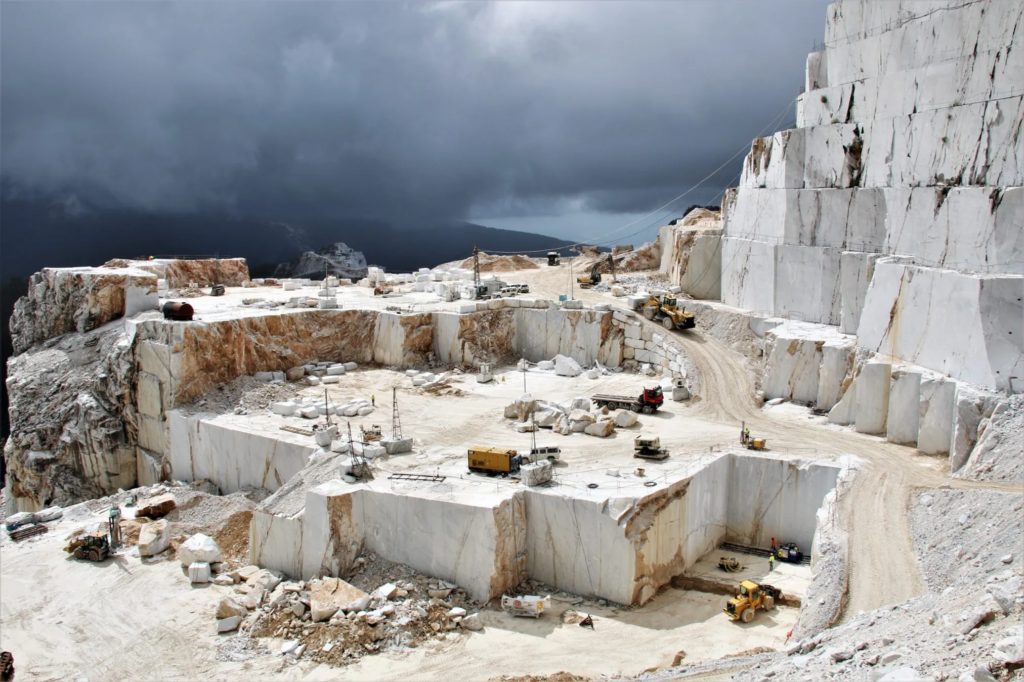
You can find some pictures or illustrations of this kind of process, like for instance this 1852 illustration of Carrara workers. In Glorantha, the process might be facilitated by magic, from spells that increase strength and stamina, to elemental spirits commanded to help, and more. How much of this happens might vary greatly depending on your own take on the setting, of course, including how “high magic” it is.
If you want to look at more big white blocks of rocks, you can check out this short documentary on Greek marble quarries. It gives a good idea of how big and heavy marble is, and you can sort of extrapolate backwards from how the excavators work to imagine how people did it by hand a long time ago:
There might even be some historical movies featuring old excavation techniques? The Agony and The Ecstasy, an old Charlton Heston movie about Michelangelo, features Renaissance-era marble excavation. You can spot a few scenes in this trailer:
I’m not saying that the Romans would have used the same techniques, or even that this movie is historically accurate (it’s probably not), but I’m saying it gives ideas for how to include this sort of location into a dramatic story! It might be missing a scene with magical lightning blowing up half the quarry, though. You’ll have to imagine that yourself, but it shouldn’t be too hard?
The Alps around Carrera is a UNESCO World Heritage Site, and you can visit some of the marble quarries on your own. Of course, multiple tour operators have organized visits too, such as this one. If you’ve been there, please share your pictures!
Thank you for reading
That’s it for this week! Please contact us with any feedback, question, or news item we’ve missed!


